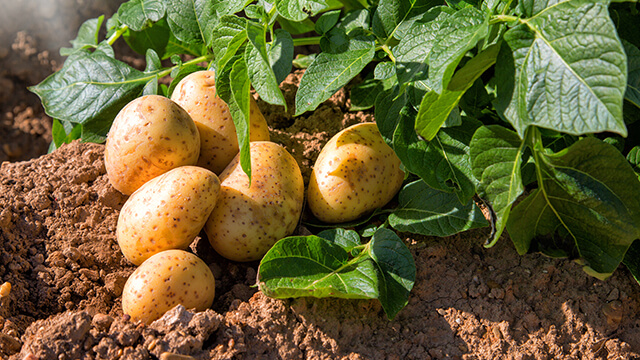Project Report For Potato Farming
Introduction
Project report for potato farming is as follows.
Potato farming in India is an important part of the country’s agricultural sector, as potatoes are a staple food for many people in India. Potatoes are widely cultivated in the states of Uttar Pradesh, West Bengal, Bihar, Andhra Pradesh, Punjab, and Tamil Nadu.
The potato plant is a herbaceous perennial that belongs to the nightshade family. It is a tuberous crop grown for its starchy, edible tubers. Potatoes are a versatile crop and can be used in a variety of dishes, such as mashed potatoes, roasted potatoes, potato chips, and more. They are also a good source of nutrients, including vitamin C, potassium, and fiber.

In India, potato farming is typically done on small to medium-sized plots of land, with farmers using traditional methods of cultivation. Potatoes are grown in a variety of soil types, but well-drained, loamy soil with a pH between 4.5 and 6.5 is ideal.
Potatoes are usually propagated through the use of seed tubers, which are small pieces of potato that contain an “eye” or sprout. These seed tubers are planted in rows and spaced about 12 inches apart. The plants are then grown for about four to six weeks before the tubers are ready to be harvested.
Get Completely Custom Bankable Project Report
In recent years, there has been a push to modernize potato farming in India and increase productivity. This has included the adoption of new technologies such as precision farming, which involves the use of sensors and other technologies to optimize irrigation and fertilization.
There are also efforts to improve the storage and transportation of potatoes in India. Many farmers in India rely on traditional methods of storage, such as burying the potatoes in pits or storing them in baskets, which can lead to spoilage and loss. Improved storage facilities and transportation infrastructure can help to reduce these losses and increase the profitability of potato farming in India.
Market Potential Of Potato Farming
The Potato Processing Market was valued at $39,190.10 million in 2021 and is projected to increase to $53,577.22 in 2027, with a CAGR of 5.4% from 2022 to 2027.
Expenses

Product Cost Breakup

Reveneue Vs Expenses

Market Trend

Potatoes are a staple food in India, with a significant market potential for potato farming. According to the National Horticultural Board, India is the third largest producer of potatoes in the world, with a production of around 48 million metric tons in 2019. The potato is grown in various parts of the country, with the largest production in the states of Uttar Pradesh, West Bengal, Bihar, and Gujarat.
There are several factors that contribute to the market potential for potato farming in India. One of the main factors is the increasing demand for potatoes in the country. Potatoes are used in a variety of dishes in Indian cuisine, and the demand for potatoes is expected to continue to rise as the population grows.
In addition, the growing middle class in India has increased the demand for processed potato products, such as chips and fries, which has further fueled the market potential for potato farming in the country.
Another factor that contributes to the market potential for potato farming in India is the availability of suitable land and climatic conditions for potato cultivation.
Potatoes can be grown in a variety of soil types and climates, making them suitable for cultivation in many parts of India. The country has a long growing season, which allows for multiple crops of potatoes to be grown each year.
There are also several government initiatives and policies in place that support the growth of the potato farming industry in India. The government provides financial assistance to farmers for the purchase of seed potatoes and other inputs, as well as technical assistance and training to improve potato farming practices. In addition, the government has implemented a number of export incentives and trade agreements with other countries, which has helped to increase the demand for Indian potatoes in the global market.
